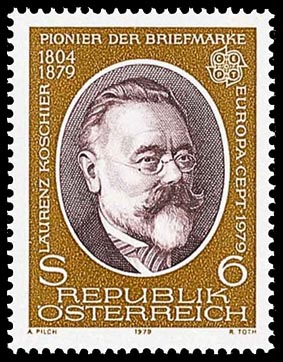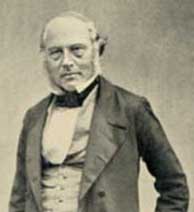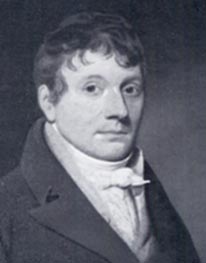| "To invent, you need a good imagination and a pile of junk.” ~ Thomas A. Edison "Great discoveries and improvements invariably involve the cooperation of many minds. I may be given credit for having blazed the trail, but when I look at the subsequent developments I feel the credit is due to others rather than to myself." ~ Alexander Graham Bell |
 Lovrenc Košir suggested, in a letter dated 31 December 1835, the
introduction of "artificially affixed postal tax stamps". His
suggestion was looked at in detail by his superiors and rejected.
Lovrenc Košir suggested, in a letter dated 31 December 1835, the
introduction of "artificially affixed postal tax stamps". His
suggestion was looked at in detail by his superiors and rejected.  Rowland
Hill first started to take a serious interest in postal reforms in
1835. In 1836 the Robert Wallace MP, provided Hill with numerous books
and documents, which Hill described as a “half hundred weight of
material”.
Rowland
Hill first started to take a serious interest in postal reforms in
1835. In 1836 the Robert Wallace MP, provided Hill with numerous books
and documents, which Hill described as a “half hundred weight of
material”. The
claim that James
Chalmers
was the inventor of the postage stamp first surfaced in 1881 when the
book “The Penny Postage Scheme of 1837”, written by his son, Patrick
Chalmers, was published. In this book the son claims that James
Chalmers first produced an essay for a stamp in August 1834 but no
evidence has ever been provided to substantiate the claim. In fact James Chalmers admitted that the first essay he produced was after
Rowland Hill had published his proposal.
The
claim that James
Chalmers
was the inventor of the postage stamp first surfaced in 1881 when the
book “The Penny Postage Scheme of 1837”, written by his son, Patrick
Chalmers, was published. In this book the son claims that James
Chalmers first produced an essay for a stamp in August 1834 but no
evidence has ever been provided to substantiate the claim. In fact James Chalmers admitted that the first essay he produced was after
Rowland Hill had published his proposal. Samuel
Roberts (6 March 1800 - 24 September 1885) was one of the
earliest, if not the earliest, advocates of postal reform.
Samuel
Roberts (6 March 1800 - 24 September 1885) was one of the
earliest, if not the earliest, advocates of postal reform.